Algal holobionts: challenges and opportunities
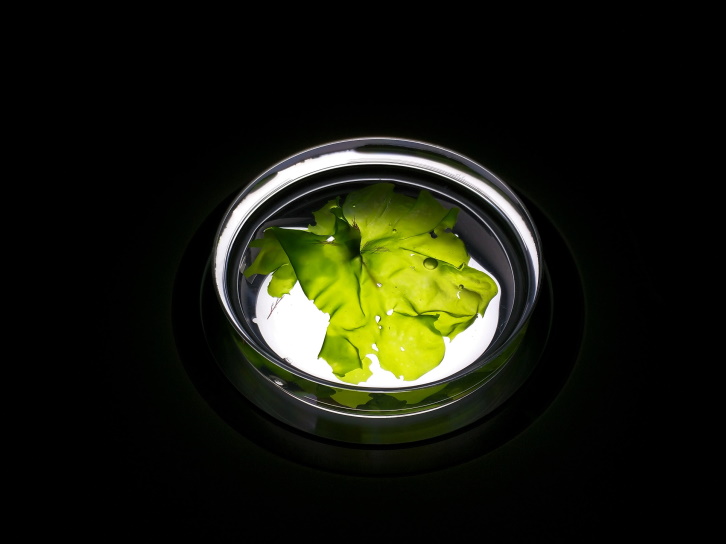
Theo Murphy meeting organised by Dr Mahasweta Saha, Dr Catherine LeBlanc, and Dr Suhelen Egan.
This meeting aimed to integrate and network the broad interdisciplinary community of scientists working on marine algal holobionts. It discussed advances made in this field and future research directions. It aimed for a diverse, inclusive meeting ensuring gender, balance, ECR participation and including both EU, non-EU and other non-algal holobiont researchers.
The schedule of talks, speaker biographies and abstracts are available below. Meeting papers will be published in a future issue of Philosophical Transactions of the Royal Society B.
Attending this event
This meeting has now taken place.
Enquiries: contact the Scientific Programmes team.
Organisers
Schedule
Chair
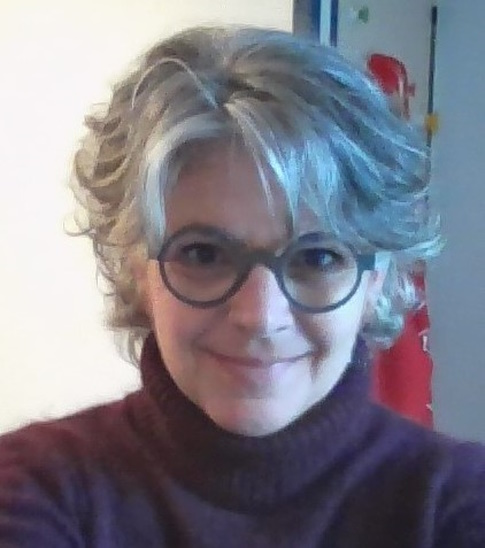
Dr Catherine Leblanc, Sorbonne Université-CNRS, Laboratory of Integrative Biology of Marine Models, and the Station Biologique de Roscoff, France

Dr Catherine Leblanc, Sorbonne Université-CNRS, Laboratory of Integrative Biology of Marine Models, and the Station Biologique de Roscoff, France
Dr Catherine Leblanc carried out her PhD in Marine Biology at the Marine Biological Station at Roscoff, where she studied the structure and evolution of algal mitochondrial genomes. She then moved to the Zoological Stazione of Naples to work as postdoctoral fellow (EMBO and Marie Curie) on the molecular responses of diatoms to light in the group of Dr Chris Bowler. Back at Roscoff, she obtained a permanent position at CNRS in 1999 to develop her own research on molecular defence mechanisms and halogen metabolism in brown macroalgae. Since 2014, she has been the head of the team “Algal Biology and Interactions with the Environment”, whose main research objectives are to better understand how macroalgal holobionts respond to marine environment changes and the roles of algal associated microbiome in algal physiology.
| 09:00-09:05 |
Introduction
|
|---|---|
| 09:05-09:30 |
Holobiont health: a philosophical puzzle
Host-associated microbiomes play a variety of important roles in host health and disease. Attempts to understand and make predictions about complex host-microbiome interactions have led many researchers to talk about microbiomes in terms of being either healthy or dysbiotic. Dr Skillings will look at some alternatives for making sense of ‘healthy microbiome’ and ‘holobiont health’ talk. He will argue that existing ‘naturalistic’, or non-evaluative, accounts of health are usually not appropriate for these systems, and that notions of ecosystem health face similar shortcomings. These problems suggest that ‘microbiome health’ might only be definable in evaluative terms and may never extend beyond a metaphor to organismal health. Dr Skillings will end by looking at some possibilities for understanding overall host health given the importance and ubiquity of microbiomes. 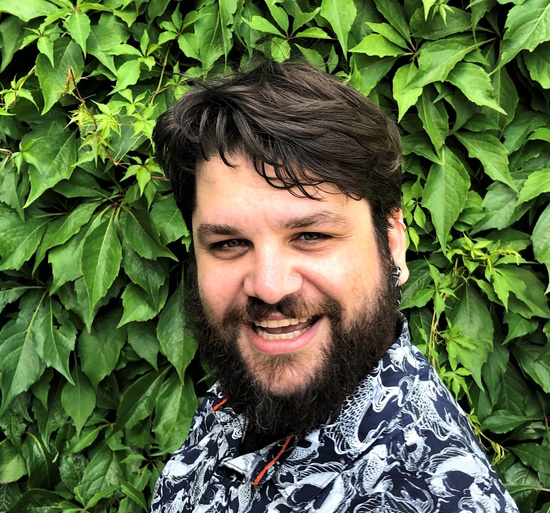
Dr Derek Skillings, University of North Carolina, USA

Dr Derek Skillings, University of North Carolina, USADerek Skillings is an Assistant Professor in the Philosophy and Biology departments at UNC Greensboro. He works primarily on biological individuality, explanation, and causal reasoning in biology and medicine. He is particularly interested in the problem of how to approach the complex and hierarchical nature of living systems when investigating biological phenomena and constructing explanations. He currently has projects on biological individuality, holobionts, the nature of health, robustness, causal explanation, speciation and lineage concepts, and biological organisation. |
| 09:30-09:45 |
Discussion
|
| 09:45-10:15 |
Impact of the Roseobacter group on host microbiome assembly and health
Members of the Roseobacter group are ubiquitous across marine ecosystems where they can interact with algae and play important roles that can be both beneficial and at times detrimental to the host. In this talk Dr Egan will firstly discuss studies showing that members of the Roseobacter group are effective colonisers of different algal surfaces and can influence subsequent microbiome development of the host. Secondly, she will present our recent work aiming to understand bacterial causes of bleaching disease in the red seaweed Delisea pulchra and the discovery of new Roseobacter isolates with seaweed probiotic activity. These findings not only demonstrate the ecological importance of these marine bacteria but also pave the way for effective microbiome manipulation strategies for conservation and/or biotechnology applications. 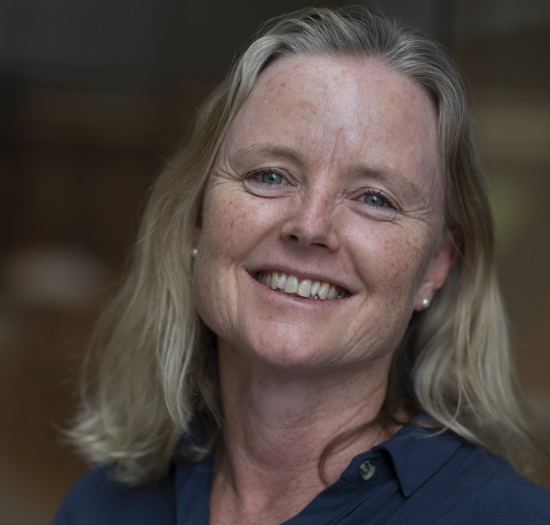
Dr Suhelen Egan, University of New South Wales, Australia

Dr Suhelen Egan, University of New South Wales, AustraliaSuhelen gained her PhD in microbiology from UNSW Sydney. She now holds a position as an Associate Professor at the School of Biological Earth and Environmental Sciences and Centre for Marine Bioinnovation at UNSW. Her research interests include understanding the diversity and mechanisms of microbial symbioses in marine host organisms. An example of her recent work is the discovery that disease in macroalgae can result from the action of opportunistic pathogens and that mitigation of disease can be achieved through microbiome manipulation. In addition to addressing fundamental scientific questions, Suhelen applies her knowledge of these symbiotic systems towards the discovery and development of new marine biotechnologies. |
| 10:15-10:30 |
Discussion
|
| 10:30-11:00 |
Break
|
| 11:00-11:30 |
A naturally occurring beneficial bacterium protects seaweed from bleaching disease
Microbiome manipulation is gaining fresh attention as a way to mitigate diseases in aquaculture. Recently, the commercially farmed seaweed Saccharina japonica suffers from a bacterial induced bleaching disease at the late nursery stage, which has major implications for the reliable supply of healthy sporelings. Pseudoalteromonas piscicida X-8 (PpX-8) has been identified as the pathogenic bacterium for the bleaching disease. Vibrio alginolyticus X-2 is a naturally occurring beneficial bacterium with PpX-8. This presentation will introduce Professor Wang’s latest findings on how the beneficial bacterium V. alginolyticus X-2 can significantly reduce the risk of bleaching disease. By combining infection assays and multi-omic analyses, she will provide evidence to suggest that the underlying protective mechanisms of V. alginolyticus X-2 involve in maintaining the stability of the epibacterial communities, increasing the expression of S. japonica genes related to immune and stress protection pathways, reducing the expression of genes related to photosynthetic energy synthesis, and stimulating betaine concentrations in S. japonica holoboints. Thus, V. alginolyticus X-2 can elicit a suite of microbial and host responses to mitigate the bleaching disease. Moreover, Professor Wang’s results suggest that the application of beneficial bacteria prior to the disease onset may be critical for controlling the disease occurrence. Her study provides insights into disease control in farmed S. japonica through the application of beneficial bacteria. 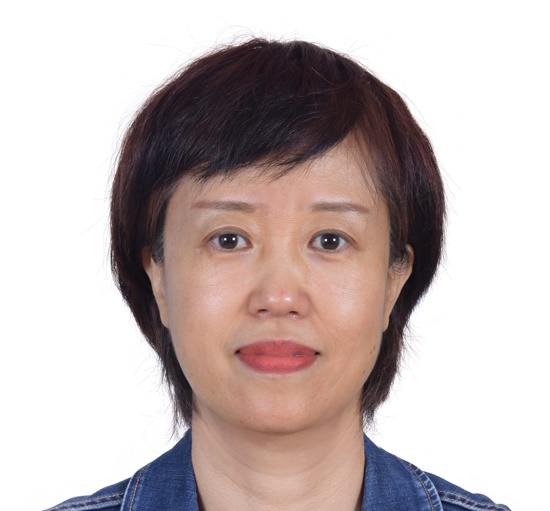
Professor Gaoge Wang, Ocean University of China

Professor Gaoge Wang, Ocean University of ChinaProfessor Gaoge Wang is the faculty of the Ocean University of China. Her research interests include main two aspects. Firstly, she focuses on identifying the pathogenic bacteria/virulence factors of the bacterial diseases of commercially farmed brown alga Saccharina japonica, and tries to reveal the virulence mechanisms of the pathogens. Secondly, she is interested in deciphering the interaction mechanisms between the pathogenic and beneficial bacteria co-occurring on the surface of S. japonica. These results help to prevent and mitigate the disease outbreaks during the cultivation of S. japonica. She has published more than 45 papers and was the Principal Investigators of five research projects at both national and international level projects within the recent five years. |
| 11:30-11:45 |
Discussion
|
| 11:45-12:15 |
From sea to land and back again: the seagrass holobiont and its role in ecosystem restoration
Seagrasses share an evolutionary history with land plants and have recolonized the sea to become marine foundation species. They form productive, biodiverse and carbon-storing ecosystems; seagrass meadows, which are sadly also threatened by human activities. With features unique to land plants, such as roots, flowers and seeds, seagrasses differ from other marine macrophytes such as seaweeds. However, they also have a lot in common, including diverse microbiomes of marine bacteria and microbial eukaryotes. In this talk, Dr Bengtsson will outline her research on the Zostera marina seagrass microbiome in a series of studies linked to seagrass meadow ecosystem restoration. Dr Bengtsson’s results showed that seagrass seeds harbour a distinct microbiome which is likely responsible for vertical transmission and may influence seed germination and seedling survival. The core microbiome of Zostera marina gives important hints on host-microbe interactions unique to the seagrass holobiont. At the same time, seagrass microbiomes are extremely variable, suggesting that unspecific interactions define this (evolutionarily speaking) relatively recent marine holobiont. Differences and similarities to seaweed holobionts as well as wider implications for marine microbiomes and carbon cycling will be discussed. 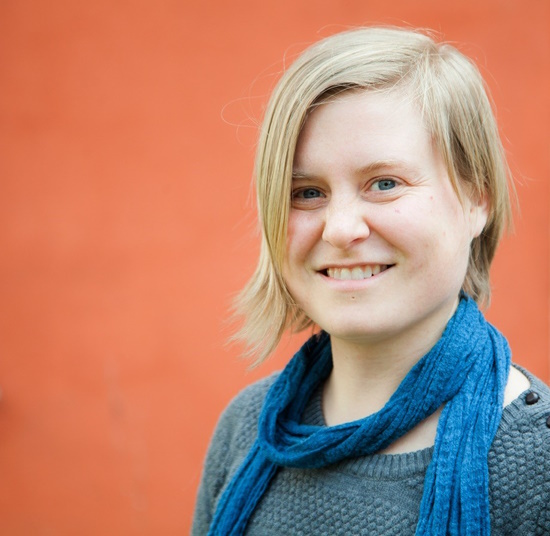
Dr Mia Bengtsson, University of Greifswald, Germany

Dr Mia Bengtsson, University of Greifswald, GermanyMia M Bengtsson studied biology in Stockholm and Oslo with a special focus on marine biology and seaweeds. Her PhD at the University of Bergen focused on the microbiome of the kelp, Laminaria hyperborea, and its role in kelp forest carbon cycling. After her PhD, she shifted to studying algal-bacterial interactions in freshwater lakes and streams. Since 2016, she is based in Greifswald at the German Baltic Sea coast where she leads a research group, Aquatic Microbiomes, working on many aspects of microbial interactions in marine and freshwater ecosystems. A central focus is on the microbial ecology of seagrass meadows, including topics such as ecosystem restoration as well as interactions within the Zostera marina holobiont. |
| 12:15-12:30 |
Discussion
|
Chair
Dr Mahasweta Saha, Helmholtz Center for Ocean Research, GEOMAR, Germany
Dr Mahasweta Saha, Helmholtz Center for Ocean Research, GEOMAR, Germany
Dr Mahasweta Saha studied a Masters in Marine Science at University of Calcutta, India before being employed as a Research Scholar at Marine Natural Product Chemistry Division at National Institute of Oceanography (NIO), India. During her research stay at NIO, she was awarded the international research scholarship in 2008 from DAAD to pursue her PhD in Algal Chemical Ecology at Helmholtz Centre of Ocean Research (GEOMAR) under the supervision of Prof. Dr. Martin Wahl and Dr. Florian Weinberger. Following the completion of her PhD in 2011 and a family care break of 1 year, in 2013, Mahasweta was awarded an international Post Doctorate research grant from the DFG excellence cluster ‘Future Ocean’ and since then working on chemical ecology of invasive seaweeds at GEOMAR. She has been recently awarded a DFG Post-Doctoral fellowship from DFG to pursue her next research project on volatile infochemistry of seaweeds at University of Essex, United Kingdom. Her research interests include seaweed ecology; bacterial biofilm biology and ecology; biofouling and antifouling; environmental change; invasion ecology and volabolomics. She has supervised >10 Bachelor, Master and Internship students towards successful completion of their project and acts as a reviewer of leading scientific journals.
| 13:30-14:00 |
Physiological and molecular insights into host-specificity in diatom-bacteria interactions
Although diatom microbiomes are commonly dominated by a few major bacterial taxa, their composition at the species level is often very divergent between diatom host species, even closely related ones. The importance of such host selection is generally recognised, but little is known about the specific processes and interactions that shape microbiome assembly and composition. Recent evidence suggests that reciprocal exchanges of specific exudates and metabolites may at least partly drive the assembly process, and that environmental impacts on microbiomes may be mediated by such exchanges. Professor Sabbe characterised the microbiome assembly process of an axenic diatom host (the marine biofilm-forming diatom Seminavis robusta) upon addition of a foreign versus a native bacterial inoculum through metabarcoding. The physiology and molecular responses of both the diatom and the assembled bacterial community was characterised through a combination of metatranscriptomics, stable isotope tracing and chemical measurements. While the resulting microbiomes in both treatments converged to dominance by Alphaproteobacteria (especially Rhodobacteraceae), community composition at the ASV level was highly divergent, with the assembly process being more stochastic in the foreign inoculum treatment. Diatom signalling pathways were upregulated in the presence of bacteria, independent of their origin, but the transcriptional response in the host was more complex and diverse in the native inoculum treatment. The same holds true for the bacterial community. These observations were corroborated by evidence of more efficient carbon processing and exchange between the diatom and its microbiome in the native treatment, underscoring the importance of coevolutionary processes in diatom-microbiome interactions. 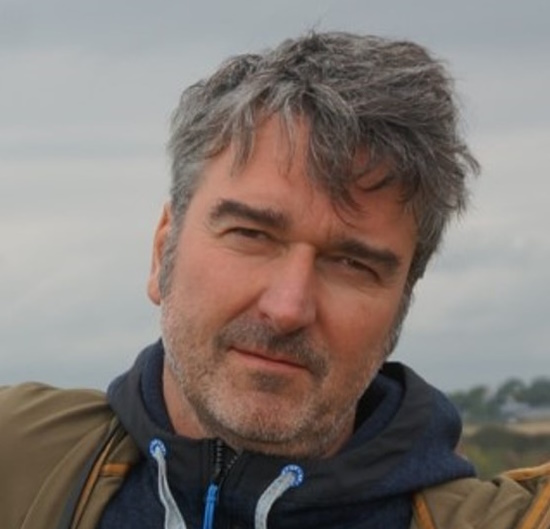
Professor Koen Sabbe, Ghent University, Belgium

Professor Koen Sabbe, Ghent University, BelgiumKoen Sabbe obtained his PhD in Biology (on the biodiversity and ecology of estuarine intertidal benthic diatoms) from Ghent University (Belgium), where he is currently working as a full Professor. His research aims at improving our understanding of what processes drive the assembly and functioning of aquatic microbial systems in a wide range of environments, from Western European tidal flats to Greenlandic fjords. One of his primary research interests concerns the ecology of diatom-dominated biofilms in tidal sediments, and more specifically how interactions between diatoms and bacteria impact the dynamics and functioning of these biofilms. |
|---|---|
| 14:00-14:15 |
Discussion
|
| 14:15-14:45 |
Three become one in a tripartite community: reassessing the collaborative adaptation of Ulva and its microbiome to cold temperatures in Antarctica
Chemical communication using infochemical-mediated strategies plays an essential role in ecological interactions in marine ecosystem. These chemical signals in algal–bacterial interaction are still not completely known but given that bacteria release algal growth- and morphogenesis-promoting factors (AGMPFs) required for (green) macroalgae growth and development, adaptive responses to environmental stressors must be considered within the community structure. To evaluate the contribution of macroalgae and its microbiome to various stress factors particularly temperature, the reductionistic model system of the tripartite community formed by Usnea mutabilis and its two essential bacteria, Roseovarius sp. strain MS2 and Maribacter sp. strain MS6, which release all essential AGMPFs, was investigated. This analysis will let us to determine the stress response of each algal and bacterial symbionts within this cross-kingdom interactions and will help to understand the ecological success of Ulva. Dr Ghaderiardakani will present the morphogenetic effect of recently isolated bacteria from Potter Cove, King George Island (Isla 25 de Mayo) in Antarctica, on the model system U. mutabilis Føyn starting with axenic gametes. The results indicate that cold-adapted bacteria release sufficient amounts of AGMPFs, inducing cell differentiation, and cell division in axenic cultures. In particular, metabolite profiling of polar low molecular weight compounds revealed insights into the species-dependent cold stress response of the green seaweed holobiont Ulva (Chlorophyta). Integrating the chemical ecology to aquatic-microbiome investigations will allow us to further explore underlying adaptation and acclimation mechanisms in macroalgae to stress situations. 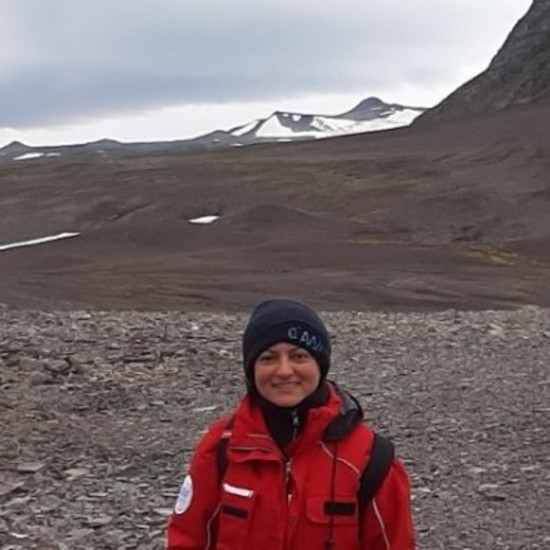
Dr Fatemeh Ghaderiardakani, Freidrich Schiller University, Germany

Dr Fatemeh Ghaderiardakani, Freidrich Schiller University, GermanyFatemeh Ghaderiardakani is a Postdoctoral Fellow in Dr Wichard’s lab, Institute for Inorganic and Analytical Chemistry, Friedrich Schiller University Jena, Germany. She holds a PhD in biosciences from the University of Birmingham. Her research interests include understanding the cross kingdom talk of bacteria and Ulva sp. based on infochemicals and the role of these symbiotic bacteria in adaptation to cold temperatures. She has taken part in an expedition to Antarctica in January-February 2020 and is currently working on the collected samples from this trip. |
| 14:45-15:00 |
Discussion
|
| 15:00-15:30 |
Break
|
| 15:30-16:00 |
Understanding the organism: the holobiont composition in relation to temporal changes in the red alga Chondrus crispus
The molecular revolution has totally changed the way we approach the study of organisms and has been transformative in documenting and understanding symbiotic relationships within species and their holobionts. For the seaweeds, it could be argued that traditional approaches to understanding their biology have been neglected in recent years but knowledge of, for example, their developmental morphology, life histories, phenology, chemistry or such innovations as structural colour are important in relation to the holobiont, especially spatially and temporally. Chondrus crispus, a common North Atlantic red seaweed is a source of carrageenan, an economically important polysaccharide used in food and industrial processes. As such, this species has had a long history of study, making it an excellent model with which to explore its biology in relation to the holobiont. In this talk, the results of a two-year temporal study of the microbiome of C. crispus will be presented and discussed in relation to the seaweed’s biology. This will include an exploration of the morphology, reproductive structures and life history, including timing of events observed over an annual cycle. It will also explore the phenomenon of structural colour in this species in relation to the protection of the developing carposporophyte and hypothesise as to how that might play a part in the microbiome composition. Consideration will also be given to the composition of the microeukaryotic green algal endophytes associated with C. crispus, how differences in host morphology might influence these components of the holobiont. Professor Juliet Brodie, Natural History Museum, UK
Professor Juliet Brodie, Natural History Museum, UKJuliet Brodie is a research leader in phycology at the Natural History Museum, London. She graduated from the University of Bristol with a degree in Botany and Zoology and has studied macroalgae for over 30 years. Her doctoral research was undertaken at NUI Galway and focussed on life histories, crossing studies, morphology and photoperiodic responses of red algae. Postdoctoral studies on the systematics and life histories of calcified red algae associated with coral barrier reefs were undertaken at the Smithsonian Institution, USA. She embraced molecular techniques early on in their use in algal taxonomy, is a leading authority on the Bangiales, a cosmopolitan order of red seaweeds including nori, and is a leader in the conservation of macroalgae in the UK. Her current research specialises in using genomic approaches to address questions relating to macroalgae and microbiomes in a time of rapid environmental change. |
| 16:00-16:15 |
Discussion
|
| 16:15-16:45 |
Novel lipid biomarkers for algal resistance to viral infection in the ocean
Marine viruses play a key role in regulating phytoplankton populations, greatly affecting the biogeochemical cycling of major nutrients in the ocean. Resistance to viral infection has been reported for various phytoplankton species under laboratory conditions. Nevertheless, the occurrence of resistant cells in natural populations is underexplored due to the lack of sensitive tools to detect these rare phenotypes. Consequently, our current understanding of the ecological importance of resistance and its underlying mechanisms is limited. In this presentation, Dr Schleyer will share his discovery of lipid biomarkers for the resistance of the bloom-forming alga Emiliania huxleyi to its specific virus, E. huxleyi virus (EhV). By applying an untargeted lipidomics approach, he identified a novel group of glycosphingolipid (GSL) biomarkers that characterise resistant E. huxleyi strains. Dr Schleyer and his team further detected these lipid biomarkers in E. huxleyi isolates collected from induced E. huxleyi blooms and in samples collected during an open ocean E. huxleyi bloom, indicating that resistant cells predominantly occur during the demise phase of the bloom. Lastly, he will discuss the GSL composition of E. huxleyi cultures that recover following infection and gain resistance to the virus. These findings highlight the metabolic plasticity and co-evolution of the GSL biosynthetic pathway and underscore its central part in this host-virus arms race. 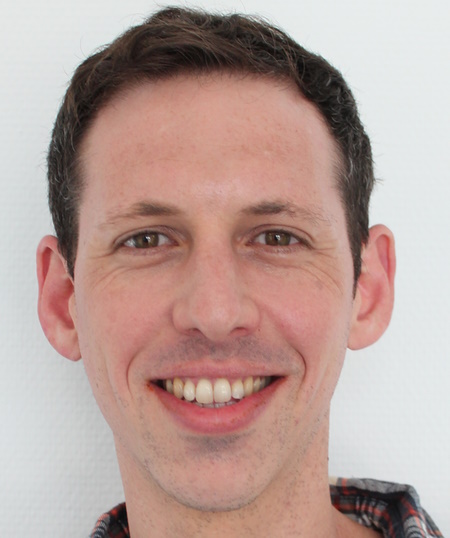
Dr Guy Schleyer, Leibniz Institute for Natural Product Research and Infection Biology, Hans Knöll Institute, Germany

Dr Guy Schleyer, Leibniz Institute for Natural Product Research and Infection Biology, Hans Knöll Institute, GermanyGuy was born in Jerusalem, Israel, and earned his BSc in chemistry and biology from the Hebrew University of Jerusalem. He then undertook his MSc studies in chemistry at ETH Zurich, Switzerland, in 2012 and conducted his master thesis with Professor Joern Piel. He returned to Israel in 2014 and started his PhD studies at the Department of Plant and Environmental Sciences at the Weizmann Institute of Science, Rehovot, with Professor Assaf Vardi, studying the chemical arms race during alga-virus interactions. In his studies, Guy applied various MS-based techniques to study the metabolic and lipidomic landscape of viral infection. He graduated in 2019 and continued for a short postdoc at the Vardi lab. Since 2021 he is a postdoctoral researcher in the lab of Professor Christian Hertweck at the Leibniz Institute for Natural Product Research and Infection Biology (Hans Knöll Institute) in Jena, Germany, where he studies the involvement of specialised metabolites in bacteria-microalgae interactions, in collaboration with Professor Georg Pohnert. |
| 16:45-17:00 |
Discussion
|
Chair

Dr Suhelen Egan, University of New South Wales, Australia

Dr Suhelen Egan, University of New South Wales, Australia
Suhelen gained her PhD in microbiology from UNSW Sydney. She now holds a position as an Associate Professor at the School of Biological Earth and Environmental Sciences and Centre for Marine Bioinnovation at UNSW. Her research interests include understanding the diversity and mechanisms of microbial symbioses in marine host organisms. An example of her recent work is the discovery that disease in macroalgae can result from the action of opportunistic pathogens and that mitigation of disease can be achieved through microbiome manipulation. In addition to addressing fundamental scientific questions, Suhelen applies her knowledge of these symbiotic systems towards the discovery and development of new marine biotechnologies.
| 09:00-09:30 |
The role of behaviour in the interactions between microalgae and bacteria
In the dilute planktonic ocean, point source release of dissolved organic matter (DOM) from individual microalgal cells, either through slow exudation or sudden lysis, generates nutrient rich microenvironments which heterotrophic bacteria may exploit through chemotaxis. The chemically-mediated interactions between microalgae and bacteria played out within these microenvironments are predicted to have profound impacts on microbial growth and chemical cycling in the pelagic ocean. However, these interactions have never been studied in situ because of technological limitations, restricting our capacity to decipher the microscale relationships between marine microbes in the environment. Here Dr Raina will describe the application of a purpose-designed microfluidic chip, the In Situ Chemotaxis Assay (ISCA), to assess the ability of marine microbes to respond to microscale chemical cues in their natural environment. When deployed in the ocean, the ISCA generates diffusing microplumes of microalgae-derived DOM, and trap motile microbes attracted to these chemicals. Flow-cytometry and metagenomic analyses subsequently determine the strength of chemotaxis and reveal the identity and metabolic capabilities of the responding microbes. Dr Raina and his team used the ISCA to investigate the response of marine microbes to microscale patches of DOM derived from globally distributed and diverse microalgal species. He observed specific microalgae-bacteria associations underpinned by chemotactic behaviours, as well as the identity of important microalgae-derived chemical cues that attract these specific bacteria. By unveiling a rich tapestry of microbial interactions through in situ microscale observations, Dr Raina’s results provide the basis for quantifying the role of chemotaxis in accessing microscale hotspots in marine systems, and an opportunity to scale up the impact of these processes on the ocean’s biogeochemistry. 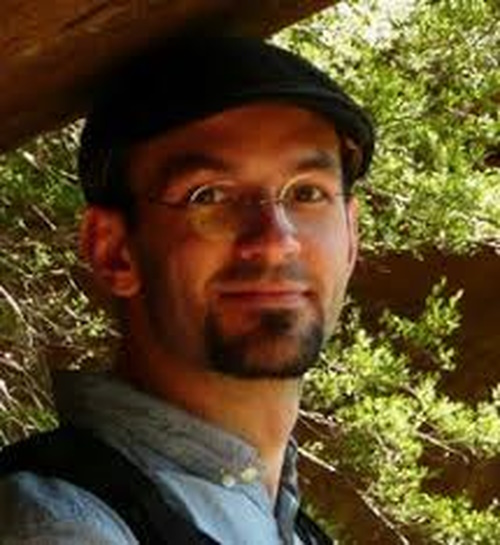
Dr Jean-Baptiste Raina, University of Technology Sydney, Australia

Dr Jean-Baptiste Raina, University of Technology Sydney, AustraliaJean-Baptiste grew up in the south of France and, prior to joining the University of Technology Sydney (UTS), he completed his PhD in 2014 at James Cook University. He is an ARC Future Fellow and deputy team leader of the Ocean Microbiology group in the Climate Change Cluster (C3). He works on marine symbiotic interactions (eg corals, phytoplankton) and study these processes at spatio-temporal scales relevant to microbial cells, using a range of molecular and analytical chemistry techniques, high-resolution imaging and custom-made in situ devices. These approaches are intended to bridge the gap between the micrometre scale where microbial processes occur, and ocean basin scales where the effects of these processes are typically reported. |
|---|---|
| 09:30-10:00 |
Chemically mediated seaweed-microbe interactions: from ‘smell’ to nature-based solutions
Seaweeds underpin some of the most extensive and productive coastal ecosystems globally. However, health and fitness of seaweeds can be impacted through surface microbial colonisation consisting mainly of bacteria. Just like land plants, seaweeds employ a range of anti and pro-microbials to deter, reduce or ‘garden’ epibacterial colonisation. Like plants, seaweeds are known to be prolific producers of BVOCs (biogenic volatile organic compounds) in the marine environment. However, unlike plants the ecological roles of seaweed BVOCs, particularly in mediating host-microbe interactions, are poorly explored when compared to the role of non-volatile compounds. Although BVOC production is known to vary temporally and with abiotic factors in seaweeds, unlike land plants we do not know yet how such variations may alter ecological interactions of seaweeds with microbes. In this talk, Dr Saha will discuss how such BVOC mediated interaction may vary with abiotic stressors. Despite being a diverse source of antimicrobial compounds seaweeds have not been evaluated for their chemical defence mechanism to remove microbiological contamination by human and environmental pathogens and thus improve water quality. Thus, ability of these macrophytes to reduce microbiological contamination is not known in the UK and surrounding waters. In this talk we will also discuss the potential of seaweeds to reduce human pathogen load in the water column to improve water quality. Dr Mahasweta Saha, Helmholtz Center for Ocean Research, GEOMAR, Germany
Dr Mahasweta Saha, Helmholtz Center for Ocean Research, GEOMAR, GermanyDr Mahasweta Saha studied a Masters in Marine Science at University of Calcutta, India before being employed as a Research Scholar at Marine Natural Product Chemistry Division at National Institute of Oceanography (NIO), India. During her research stay at NIO, she was awarded the international research scholarship in 2008 from DAAD to pursue her PhD in Algal Chemical Ecology at Helmholtz Centre of Ocean Research (GEOMAR) under the supervision of Prof. Dr. Martin Wahl and Dr. Florian Weinberger. Following the completion of her PhD in 2011 and a family care break of 1 year, in 2013, Mahasweta was awarded an international Post Doctorate research grant from the DFG excellence cluster ‘Future Ocean’ and since then working on chemical ecology of invasive seaweeds at GEOMAR. She has been recently awarded a DFG Post-Doctoral fellowship from DFG to pursue her next research project on volatile infochemistry of seaweeds at University of Essex, United Kingdom. Her research interests include seaweed ecology; bacterial biofilm biology and ecology; biofouling and antifouling; environmental change; invasion ecology and volabolomics. She has supervised >10 Bachelor, Master and Internship students towards successful completion of their project and acts as a reviewer of leading scientific journals. |
| 10:00-10:30 |
The stakes of algal holobionts at different temporary and geographic scales
Collectively, algae account for nearly half of Earth’s primary production; increasingly, their interactions with parasites are recognised as a key to the dynamics of microbial pelagic food webs. In temperate and cold coastal areas, macroalgae are ecosystem engineers and provide habitat for fish and other animals. Fuelled by soaring demand, the current growth of algal cultivation sits in the wider context of intensifying use and increasing dependency of mankind on the oceans. On land, domestication of plants has fundamentally transformed human societies and terrestrial ecosystems. Since the Neolithic, agriculture has shaped landscapes, cultures, societal values, and governance, including our trade rules and conservation policies. The health of plants dictates agricultural yields as well as ecosystem health: pathogens co-evolve with domesticated species, whilst intensification of production favours outbreaks as well as the emergence of novel pathogens. In marine coastal areas, algal aquaculture represents a comparable mutation, that only occurs at a vastly higher pace than agriculture spread historically. This biological pressure is compounded by a faster rate of climate change compared to terrestrial systems. Alarmingly, reports of diseased or declining wild macroalgal populations, as well as significant losses in seaweed farms accumulate worldwide. In this talk, Dr Gachon will brush upon the work performed in her group that seeks to lay a basis towards tackling these questions. Dr Claire Gachon, Scottish Marine Institute, UK
Dr Claire Gachon, Scottish Marine Institute, UKA graduate of the Ecole Normale Supérieure (Paris), Claire Gachon originally trained as a molecular plant pathologist and now develops research on the ecology and physiology of diseases of marine algae. Notably, she set up a model laboratory interaction between the intracellular oomycete pathogen Eurychasma dicksonii and the brown algal genome model Ectocarpus siliculosus, using a using an interdisciplinary array of approaches (mostly biochemistry, molecular biology, genomics and bioinformatics). Claire has participated to several seaweed genome projects, including Ectocarpus siliuclosus, Chondrus crispus, Pythium ultimum and Porphyra umbilicalis. Her research now also encompasses freshwater algae and a broader range of pathogens, with an increasingly pronounced focus on applied topics. Claire is also in interested in infrastructure, training and networking initiatives. In particular, she currently coordinates the Marie Curie ITN ALFF (Agal Microbiome: Friends and Foes) and the NERC-funded GlobalSeaweed network on macroalgal breeding and cultivation. |
| 10:30-11:00 |
Break
|
| 11:00-11:30 |
Exploring metabolic adaptations in the kelp holobiont: the example of halogen metabolism
In the marine environment, macroalgae have established an intimate connection with associated microbial communities (bacteria, fungi, diatoms), and altogether they constitute the algal holobiont. However, the mechanisms governing the acquisition, composition and dynamics of microbes at the algal surface are still poorly understood. Laminariales (or kelps), such as Laminaria digitata, are large brown algae, which feature a unique iodine metabolism, involved in anti-oxidative protection and chemical defenses, and which might participate in the control of microbial surface colonisation. L. digitata constitutes a model of choice to explore the functional adaptation of its associated microbiota. Using a metabarcoding approach, we have characterised the microbial communities of L. digitata sporophytes under natural conditions, by comparing the microbial taxonomic composition and structure of different surface zones. These results confirmed the importance of the environment on the acquisition of specific associated bacteria that seem to vary according to algal tissues area, physiology and chemical composition along the thallus. In parallel, biochemical studies have demonstrated the presence of halogen-related enzymes in a model marine bacterium, living in association with macroalgae, some specific of iodide oxidation or others likely involved in the recycling of toxic halogen compounds. Altogether, these results suggest a potential adaptation of some surface bacteria towards iodine-based defence metabolism, conferring selective advantage during interactions with kelps, and contribute to increase our knowledge on the mechanisms governing the functioning of kelp holobionts. 
Dr Catherine Leblanc, Sorbonne Université-CNRS, Laboratory of Integrative Biology of Marine Models, and the Station Biologique de Roscoff, France

Dr Catherine Leblanc, Sorbonne Université-CNRS, Laboratory of Integrative Biology of Marine Models, and the Station Biologique de Roscoff, FranceDr Catherine Leblanc carried out her PhD in Marine Biology at the Marine Biological Station at Roscoff, where she studied the structure and evolution of algal mitochondrial genomes. She then moved to the Zoological Stazione of Naples to work as postdoctoral fellow (EMBO and Marie Curie) on the molecular responses of diatoms to light in the group of Dr Chris Bowler. Back at Roscoff, she obtained a permanent position at CNRS in 1999 to develop her own research on molecular defence mechanisms and halogen metabolism in brown macroalgae. Since 2014, she has been the head of the team “Algal Biology and Interactions with the Environment”, whose main research objectives are to better understand how macroalgal holobionts respond to marine environment changes and the roles of algal associated microbiome in algal physiology. |
| 11:30-12:00 |
Chemical ecology of the kelp holobiont
Marine brown algae are key primary producers and constitute a specific habitat strongly impacting coastal marine life. Aquaculture of algae represents a fast-growing economic sector. Worryingly, this algaculture expansion is associated with an increase in infectious diseases which may have strong economic and ecological impacts. Macroalgae also harbour microorganisms, fungi and bacteria which affect their development, fitness and defence. Indeed, the algal microbiota is the place of intense chemical communications, which finely regulates the organisation of the holobiont. In this vein, Professor Prado and her team have demonstrated that the microbiota of kelps is the seat of the production of fungal chemical mediators capable of inhibiting 1) bacterial quorum sensing, a mode of intercellular communication involved in the formation of biofilms and pathogenicity as well as the 2) infection by phycopathogens of economic interest. By using multidisciplinary approaches including chemistry of natural products, she will present new insights in the ecological roles of the algal microbiota and point out the key role of the molecular dialogue. We also demonstrate that deciphering this chemical communication is a way to identify widely diverse and original natural compounds displaying potent biological activities of interest especially in regard with agrochemical and life science uses. 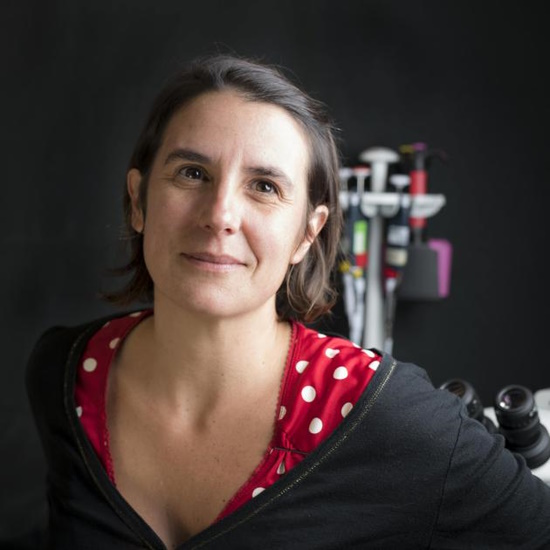
Professor Soizic Prado, National Museum of Natural History, France

Professor Soizic Prado, National Museum of Natural History, FranceSoizic Prado is a chemist of natural products and the leader of the group ‘Chemistry of Fungal and Bacterial Natural Products’ in the National Museum of Natural History in Paris. Prado’s interests (with over 65 primary publications) are the chemical characterisation and the ecological understanding of chemical mediation involved between micro-organisms and their hosts. Professor Prado has initiated and coordinated several multi-partners national projects focused on the chemistry/chemical ecology of micro-organisms and has been involved in several EU projects. Soizic Prado is also strongly involved in the research-transfer and collaboration with companies. |
| 12:00-12:15 |
Discussion
|
Chair
Dr Mahasweta Saha, Helmholtz Center for Ocean Research, GEOMAR, Germany
Dr Mahasweta Saha, Helmholtz Center for Ocean Research, GEOMAR, Germany
Dr Mahasweta Saha studied a Masters in Marine Science at University of Calcutta, India before being employed as a Research Scholar at Marine Natural Product Chemistry Division at National Institute of Oceanography (NIO), India. During her research stay at NIO, she was awarded the international research scholarship in 2008 from DAAD to pursue her PhD in Algal Chemical Ecology at Helmholtz Centre of Ocean Research (GEOMAR) under the supervision of Prof. Dr. Martin Wahl and Dr. Florian Weinberger. Following the completion of her PhD in 2011 and a family care break of 1 year, in 2013, Mahasweta was awarded an international Post Doctorate research grant from the DFG excellence cluster ‘Future Ocean’ and since then working on chemical ecology of invasive seaweeds at GEOMAR. She has been recently awarded a DFG Post-Doctoral fellowship from DFG to pursue her next research project on volatile infochemistry of seaweeds at University of Essex, United Kingdom. Her research interests include seaweed ecology; bacterial biofilm biology and ecology; biofouling and antifouling; environmental change; invasion ecology and volabolomics. She has supervised >10 Bachelor, Master and Internship students towards successful completion of their project and acts as a reviewer of leading scientific journals.

Dr Catherine Leblanc, Sorbonne Université-CNRS, Laboratory of Integrative Biology of Marine Models, and the Station Biologique de Roscoff, France

Dr Catherine Leblanc, Sorbonne Université-CNRS, Laboratory of Integrative Biology of Marine Models, and the Station Biologique de Roscoff, France
Dr Catherine Leblanc carried out her PhD in Marine Biology at the Marine Biological Station at Roscoff, where she studied the structure and evolution of algal mitochondrial genomes. She then moved to the Zoological Stazione of Naples to work as postdoctoral fellow (EMBO and Marie Curie) on the molecular responses of diatoms to light in the group of Dr Chris Bowler. Back at Roscoff, she obtained a permanent position at CNRS in 1999 to develop her own research on molecular defence mechanisms and halogen metabolism in brown macroalgae. Since 2014, she has been the head of the team “Algal Biology and Interactions with the Environment”, whose main research objectives are to better understand how macroalgal holobionts respond to marine environment changes and the roles of algal associated microbiome in algal physiology.

Dr Suhelen Egan, University of New South Wales, Australia

Dr Suhelen Egan, University of New South Wales, Australia
Suhelen gained her PhD in microbiology from UNSW Sydney. She now holds a position as an Associate Professor at the School of Biological Earth and Environmental Sciences and Centre for Marine Bioinnovation at UNSW. Her research interests include understanding the diversity and mechanisms of microbial symbioses in marine host organisms. An example of her recent work is the discovery that disease in macroalgae can result from the action of opportunistic pathogens and that mitigation of disease can be achieved through microbiome manipulation. In addition to addressing fundamental scientific questions, Suhelen applies her knowledge of these symbiotic systems towards the discovery and development of new marine biotechnologies.
| 13:30-14:00 |
Genomics approaches to understand resilience of algal holobionts in changing environments: lessons learned from the coral algal symbionts
Dinoflagellate microalgae of family Symbiodiniaceae are essential symbionts that critically support the coral reef ecosystems. As marine biodiversity hotspots, coral reefs are home to 25% of all known marine species. Symbiodiniaceae dinoflagellates supply essential nutrients and fixed carbon to diverse coral reef organisms that range from microbes (eg foraminiferans) to animals such as giant clams, sponges, and cnidarians (eg jellyfish, sea anemones, and corals). Breakdown of coral-dinoflagellate symbiosis under environmental stress leads to coral bleaching, coral death, and eventual collapse of the coral reef ecosystem. To understand how these microalgae evolved to become an integral member in supporting diverse marine holobionts, since 2018 Dr Chan and his team have generated genome data from 18 dinoflagellate taxa encompassing 13 species predominantly from Symbiodiniaceae. Their first coral hologenome study revealed how distinct biotic partners (ie the coral animal, the symbiotic dinoflagellate, and the other microbes) contribute to sustaining a functional coral holobiont. Their comparative analyses of whole-genome sequences revealed extensive genomic divergence even among different isolates of the same dinoflagellate species, indicating lineage-specific functional innovation and phylogenetic diversity that is hidden behind subtly different morphology. The genome analysis of a thermotolerant species further revealed how whole-genome duplication had enhanced its efficiency and resilience as a symbiont in changing environments. In this talk, Dr Chan will demonstrate how he harnessed the power of genomics to clarifying diversification of dinoflagellates to become essential symbionts that contribute to the success of diverse marine holobionts. Dr Cheong Xin Chan, University of Queensland, Australia
Dr Cheong Xin Chan, University of Queensland, AustraliaDr Cheong Xin Chan is a Great Barrier Reef Foundation Bioinformatics Fellow and Senior Research Officer at Institute for Molecular Bioscience at The University of Queensland in Brisbane, Australia. He has an M.Phil. in Algal Biotechnology with distinction from the University of Malaya (2003), and a Ph.D. in Genomics and Computational Biology from The University of Queensland (2008). Since 2008, Chan has been investigating the intricate evolution of algal genomes as impacted by endosymbiosis and genetic transfer, through large-scale phylogenomic analyses in a wide range of algal species, including dinoflagellates. Currently Chan is part of the Reef Future Genomics (ReFuGe) 2020 Consortium, working with Professor Mark Ragan in the genome sequencing of Symbiodinium. While his research routinely involves de novo assembly and analysis of high-throughput sequencing data, Chan also has a keen interest in developing highly scalable strategies in phylogenomics using advanced computational and database approaches. |
|---|---|
| 14:00-14:30 |
Harmful algae and their holobiome can drive organosulphur cycling in shallow aquatic systems
The haptophyte Prymnesium parvum produces prymnesin toxins targeting gill breathing organisms, and their blooms often result in large-scale fish kills with significant ecological and economic implications. P. parvum also produces the sulphurous osmolyte dimethylsulphoniopropionate (DMSP), which is the major precursor of the climate-active gas dimethylsulphide (DMS). DMSP production and its microbial cycling has important roles in stress protection, global sulphur and nutrient cycling, signalling pathways and potentially climate regulation. Building on discovery of the key gene for DMSP synthesis in P. parvum, DSYB, we conducted a molecular investigation of the seasonality and importance of P. parvum and its holobiome in DMSP cycling in Norfolk Broads, UK, brackish waters. P. parvum expressing DSYB was the major source of significant DMSP concentrations in the Broads waters that stimulated DMS production. Axenic P. parvum isolates lacked DMSP lyase activity indicating that the algal associated microbes were more likely responsible for this DMS production. Indeed, bacteria with DMSP lyases were abundant and active during and just after the P. parvum bloom but scarce under non-bloom conditions. This case study provides novel insights into the potential importance of P. parvum (and potentially other ecologically invasive haptophytes) and associated bacteria in the DMSP dynamics of shallow brackish water lake systems and in local biogenic sulphur cycling, not generally thought to be significant sources of DMSP and DMS. 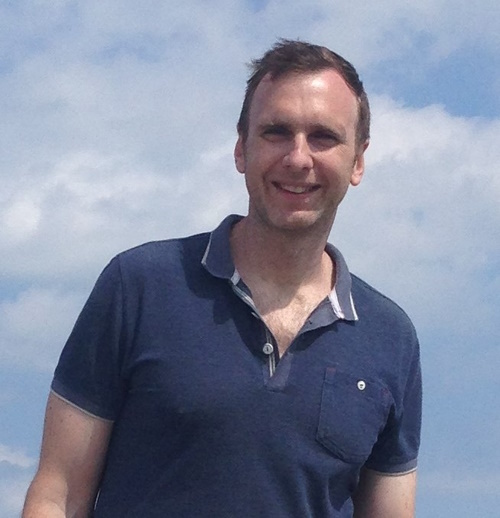
Professor Jonathan Todd, University of East Anglia, UK

Professor Jonathan Todd, University of East Anglia, UKJon Todd is a molecular and environmental microbiologist at the forefront of biogeochemical cycling research, particularly of organosulphur compounds and climate-active gases. Prior to his work, production and cycling of the abundant antistress compound and source of climate active gases, dimethylsulphoiopropionate (DMSP) was thought to be largely algal, photic and oxic, and the genetic basis was unknown. His group discovered: that heterotrophic bacteria produce DMSP; the key synthesis enzymes in bacteria and algae; the known bacterial and fungal DMSP lyase enzymes that liberate the climate-cooling gas dimethylsulphide (DMS) from DMSP; DMSP transport and downstream catabolic genes; and novel pathways by which microbes produce DMS from methanethiol. He currently studies the bioproduction of acrylic acid, a high-value chemical, from algal and agricultural waste; the biochemical and genetic diversity of DMSP synthesis and lysis and the molecular ecology of sulphur cycling in diverse environments, eg Ulva and microalgal blooms and sponge systems. |
| 14:30-15:00 |
Exploring and manipulating the Saccharina microbiome
Saccharina latissima is a canopy-forming brown alga of economic and ecological in Europe. To better understand its biology and ecology, we need more data on its associated microbiota and the importance of host-microbiota inactions in this species. This talk will summarise various aspects of Dr Dittami’s recent research on the microbiome of S. latissima. The first part will give an overview of the taxonomic composition of the S. latissima microbiome, its core components, and its variability across different parts of the algae, seasons, and regions. He will also highlight characteristic microbial signatures for healthy algae vs algae in poor health and explore to what extent the microbiome is vertically transmitted versus defined by the environment. The second part will focus on co-cultures carried out in laboratory conditions to elucidate the beneficial and harmful effects of inoculation with selected S. latissima-derived microbes. While the outcomes of these experiments were highly variable, Dr Dittami observed an overall negative correlation between host growth and the detection of AI-1-type quorum-sensing (QS) compounds in the culture medium. Furthermore, he showed that the medium from algae exposed to stress can elicit the production of QS compounds in some bacteria. Together, these data contribute to our understanding of the variability of the S. latissima microbiome and establish a basis for further experimental evaluations of algal-bacterial interactions and microbiome manipulations in this system. 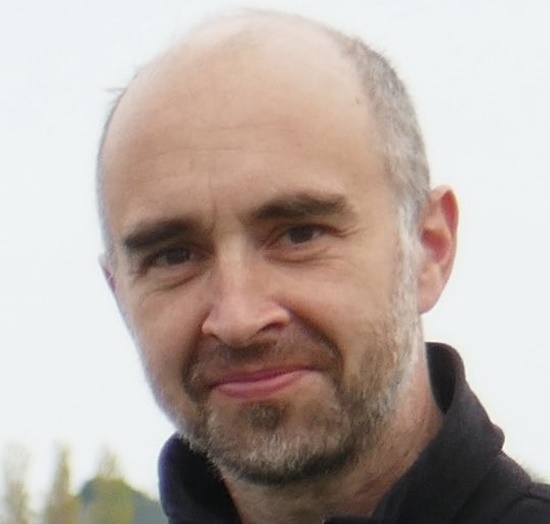
Dr Simon Dittami, Station Biologique de Roscoff, CNRS, Sorbonne Université, France

Dr Simon Dittami, Station Biologique de Roscoff, CNRS, Sorbonne Université, FranceSimon Dittami studied Ecology at the University of Kiel (Germany) and later obtained his PhD in Marine Biology at the Roscoff Biological Station (France) in 2009. After a two-year post-doctoral research position at the University of Oslo (Norway), he returned to Roscoff and became a permanent researcher in 2015. His research focuses on the metabolic interactions between brown algae and their associated microbiome, and in particular, on the influence of the latter on host traits such as stress response. |
| 15:00-15:30 |
Break
|
| 15:30-16:00 |
Microbial nitrogen cycling on seagrass leaves in a high-CO2 world
Seagrass meadows form highly productive ecosystems in coastal areas worldwide, where they are increasingly exposed to ocean acidification (OA). This can affect the seagrass holobiont (ie, the assemblage of the plant host and its associated epiphytic community) by changing the plant’s ecophysiology and the composition and functioning of its epiphytic community. Efficient nitrogen (N) cycling and uptake are essential to sustain plant productivity and are carried out by a variety of microbial partners as well as by the plant, from the rhizosphere to the leaves. While rhizosphere N cycling has been the focus of extensive research, precise quantification of N transformations on seagrass leaves, as well as an evaluation of the effects of ocean acidification, are missing. Here we show that complete N cycling occurs on leaves of the iconic seagrass Posidonia oceanica in the Mediterranean Sea, with OA accelerating the N cycle while the prokaryotic community structure remains largely unaffected. Ammonium uptake of the seagrass leaves was significantly increased under OA, with this need potentially sustained by increased microbial daylight N2 fixation on its leaves. Contrary to expectations, Dr Cardini and his team found higher potential nitrification rates associated with the P. oceanica phyllosphere under OA, while anoxic parts of the epiphytic biofilm were suitable microhabitats for nitrate reduction. Marine plants are bound to adapt to environmental changes if they are to persist; his work shows that functional adaptation of their N cycling microbiome plays a key role in regulating seagrass functioning in a high-CO2 world. 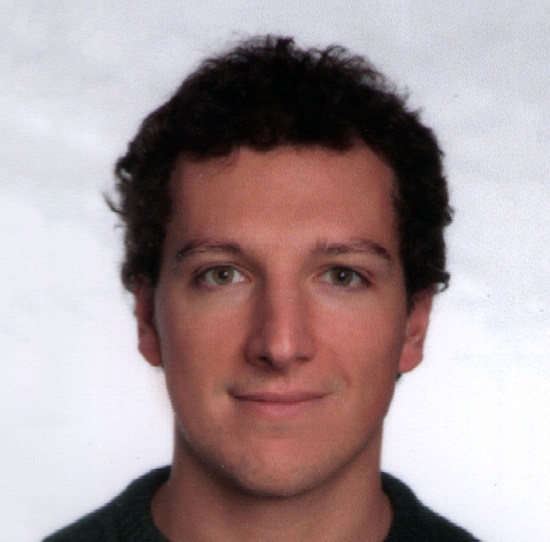
Dr Ulisse Cardini, Genoa Marine Center, Italy

Dr Ulisse Cardini, Genoa Marine Center, ItalyUlisse Cardini is Research scientist at the Stazione Zoologica Anton Dohrn (SZN) - National Institute of Marine Biology, Ecology and Biotechnology, an internationally renowned centre for marine research with headquarters located in Napoli, Italy. He is Head of the Marine Symbiomes Research Group, which he established at the SZN in 2017. A key goal of Ulisse Cardini’s work is to provide a mechanistic understanding of how host-microbe interactions in seagrasses reverberate on nutrient cycling and ecosystem functioning. By integrating across biological scales and maintaining an environmental context, his work aims to evaluate the capacity of marine holobionts to shape their ecosystems and to withstand and adapt to a changing marine environment. |
| 16:00-16:15 |
Discussion
|
| 16:15-17:00 |
Panel discussion
|
